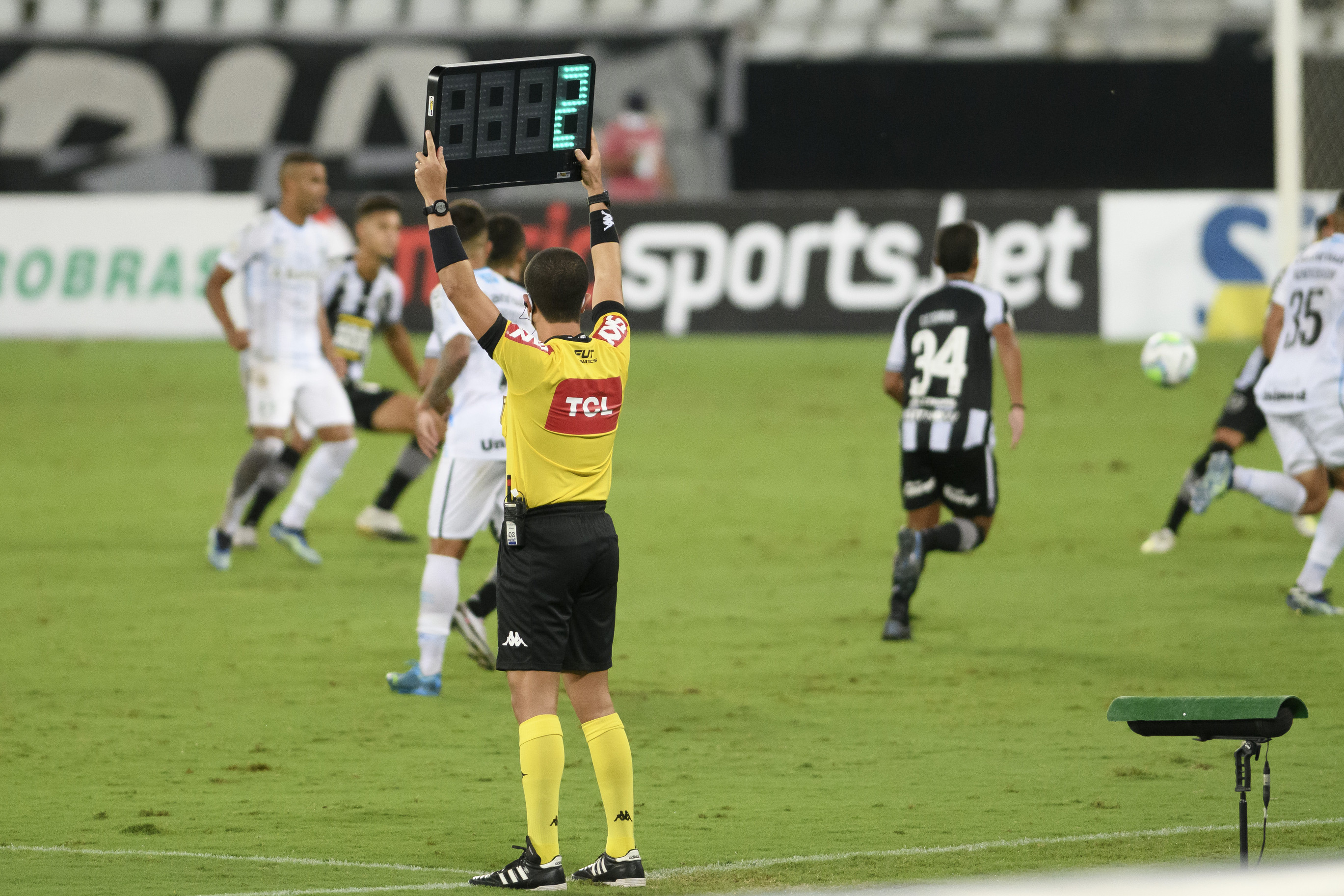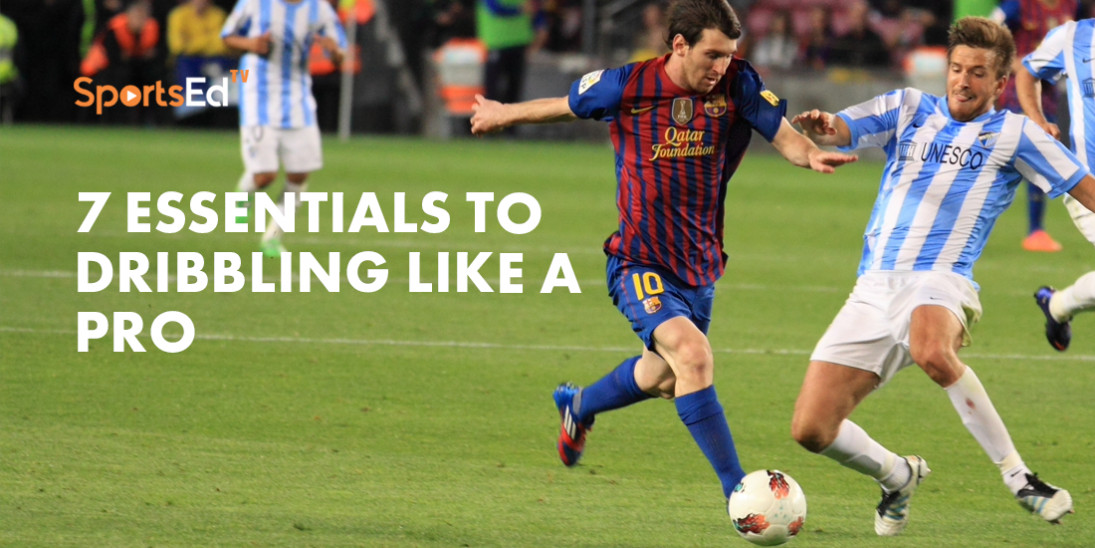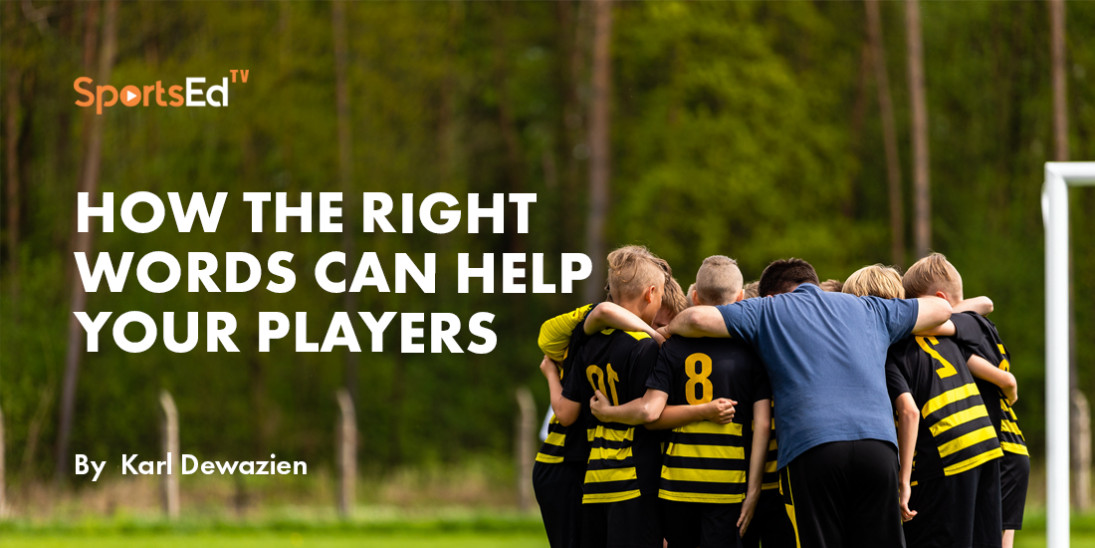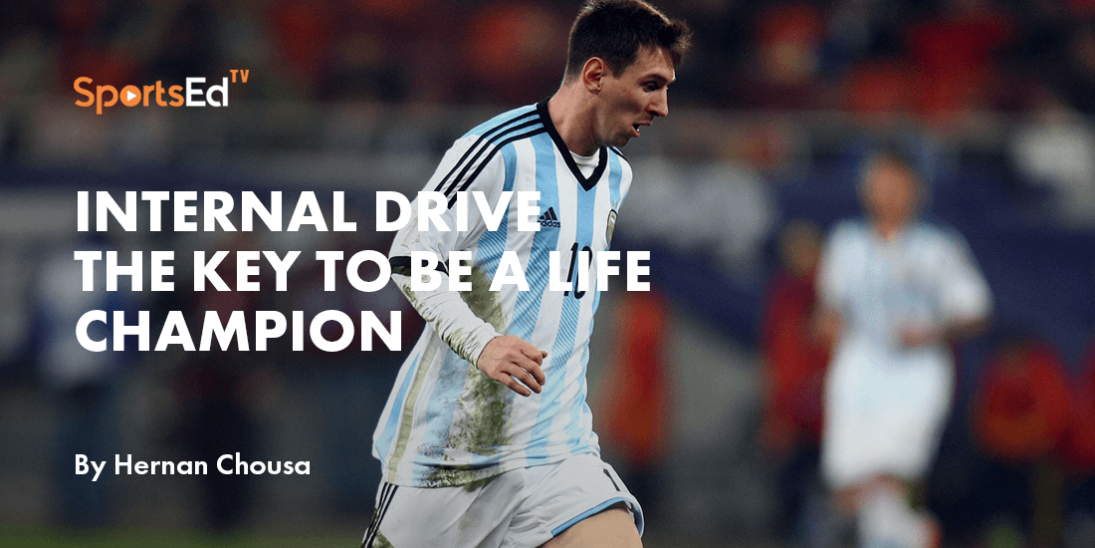Soccer
Welcome and thanks for visiting...

Everything You Need to Know About The Rules Of Football
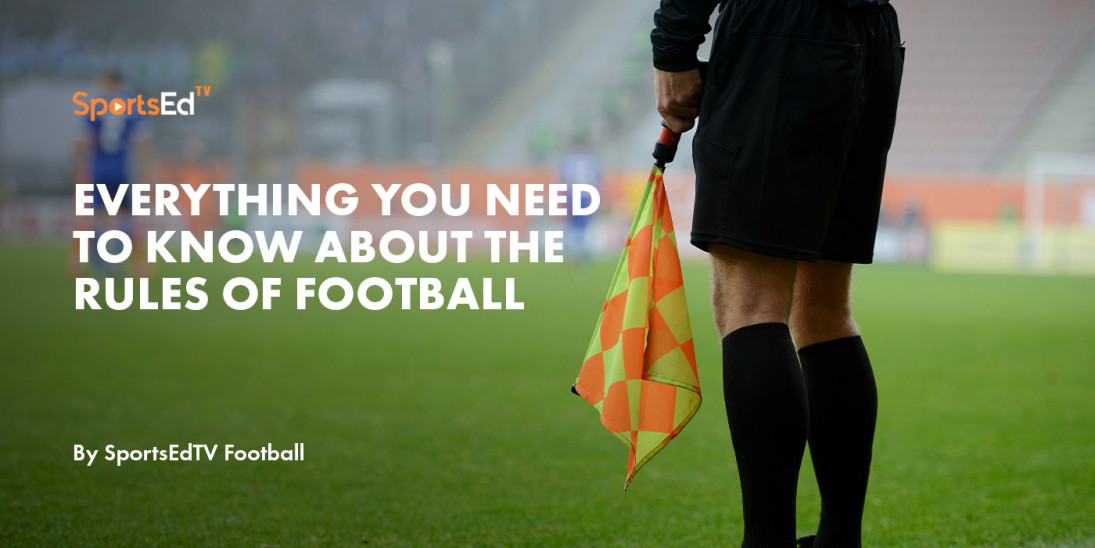
For a limited time only, join SportsEdTV Premium for free!
1. Sign up to join our Soccer community
2. Select Upgrade
3. Enter Promo Code: S973MdhZ
4. Access our 100s of free resources to help you improve
Everything You Need To Know About Football Rules
It’s hard to appreciate the beautiful game without understanding the rules that make it so. Football rules are generally straightforward, with a few specific areas being more convoluted and controversial. At the end of the day, the decisions are up to the referee. Just like a judge, it is up to them to determine how the laws of the game must be applied in each situation, and our job as players, coaches, and spectators to (often reluctantly) accept their decisions. These are the rules of football.
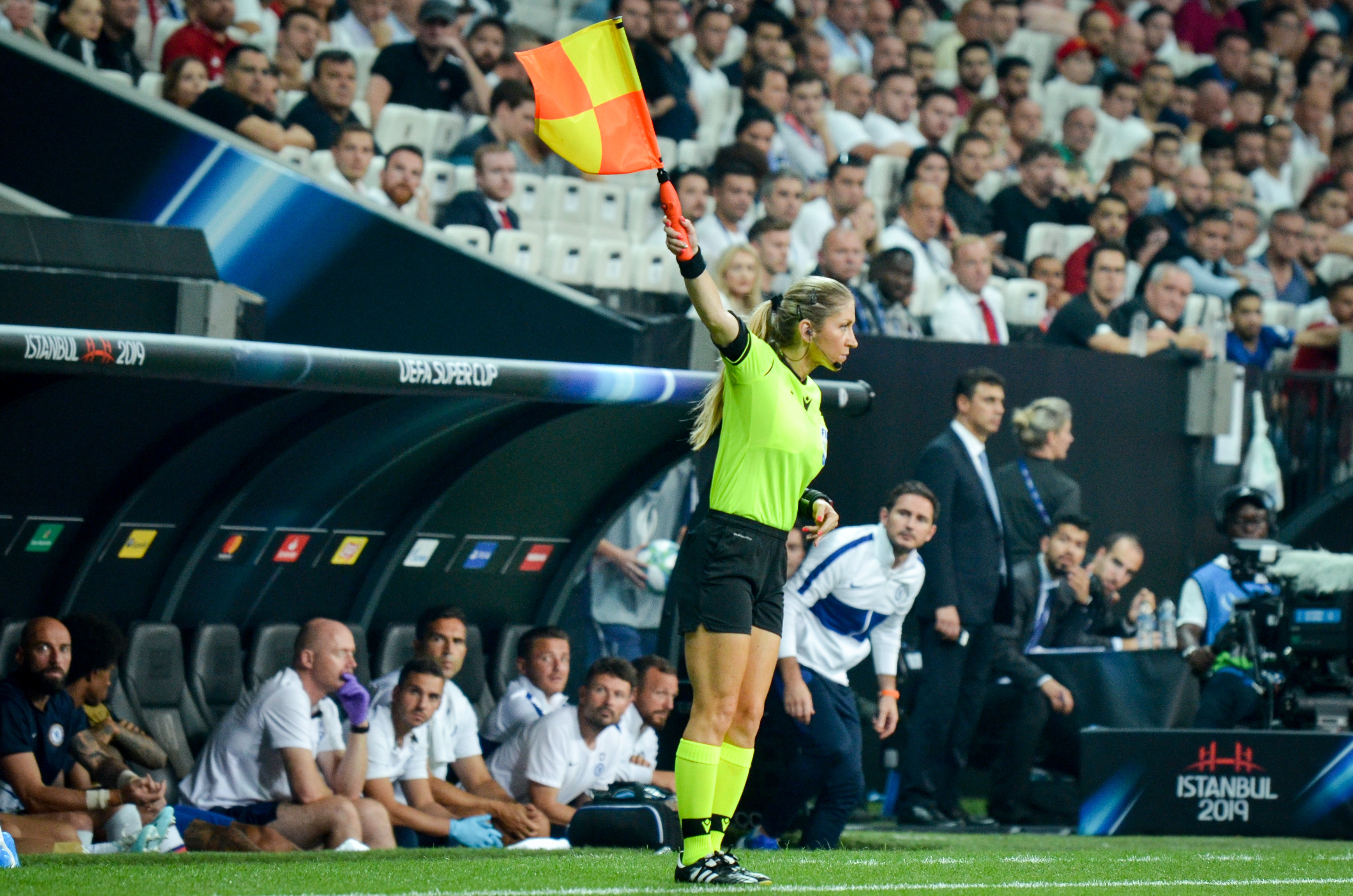
A sideline referee using her judgement to apply the football rules in a UEFA Super Cup Match
Use code SETV10 and get 10% off all FITLIGHT products (no accessories)
- Game Structure
Officially, football games have 90 minutes of playing time split into two halves of 45 minutes. There is also an extra 15-minute break between halves. At the end of each half, a small amount of time is added to make up for any time lost during the game. This is because the game clock continues counting when play stops. So if a player is injured and receiving treatment for 3 minutes with play stopped, the game clock does not stop. Instead, the referee will use their watch to track approximately how much time was lost and they will then add that much on at the end of the half.
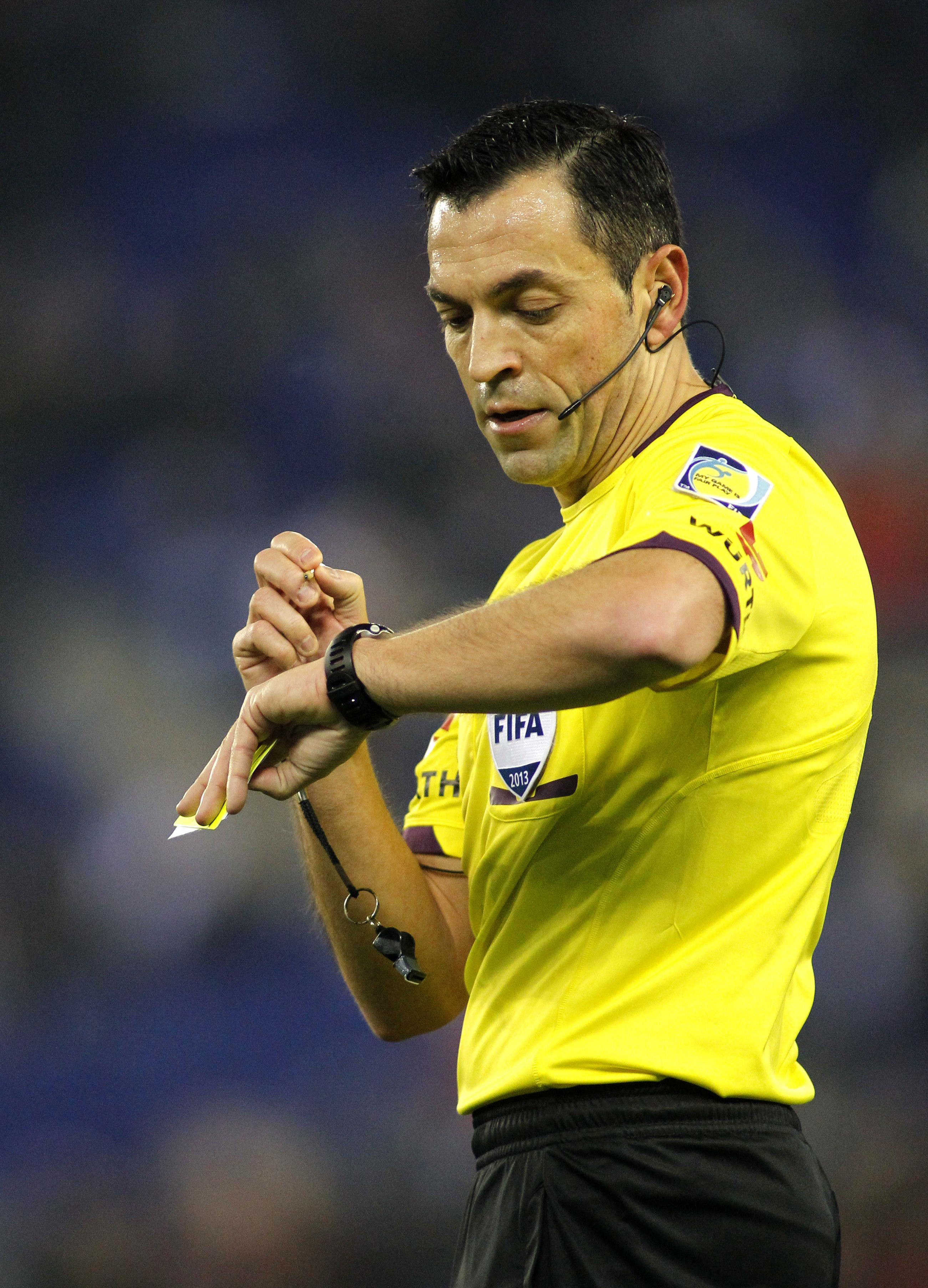
A referee checking his watch
The time the ref adds will be announced towards the end of each half by the 4th official (another ref on the sidelines) holding up a board with a big number, so the teams and audience are aware of how much time is remaining.
The referee indicating 2 minutes of added time
Most halves end up being about 47 or 48 minutes (+2 or 3 minutes at the end of each half). One professional match in England had forced breaks during the match due to flooding and ended up having 28 minutes of added time! Even in an extreme scenario like that the game clock was not paused.
Matches are generally played with 22 players on the field, 11 per team (1 goalie and 10 field players). The rule is that teams must have 7-11 players on the field each to begin the game. Teams would never play less than 11 players as a strategy, it would only happen in rare situations when they had less than 11 players available. For a full breakdown of the football positions, read our article on positions.
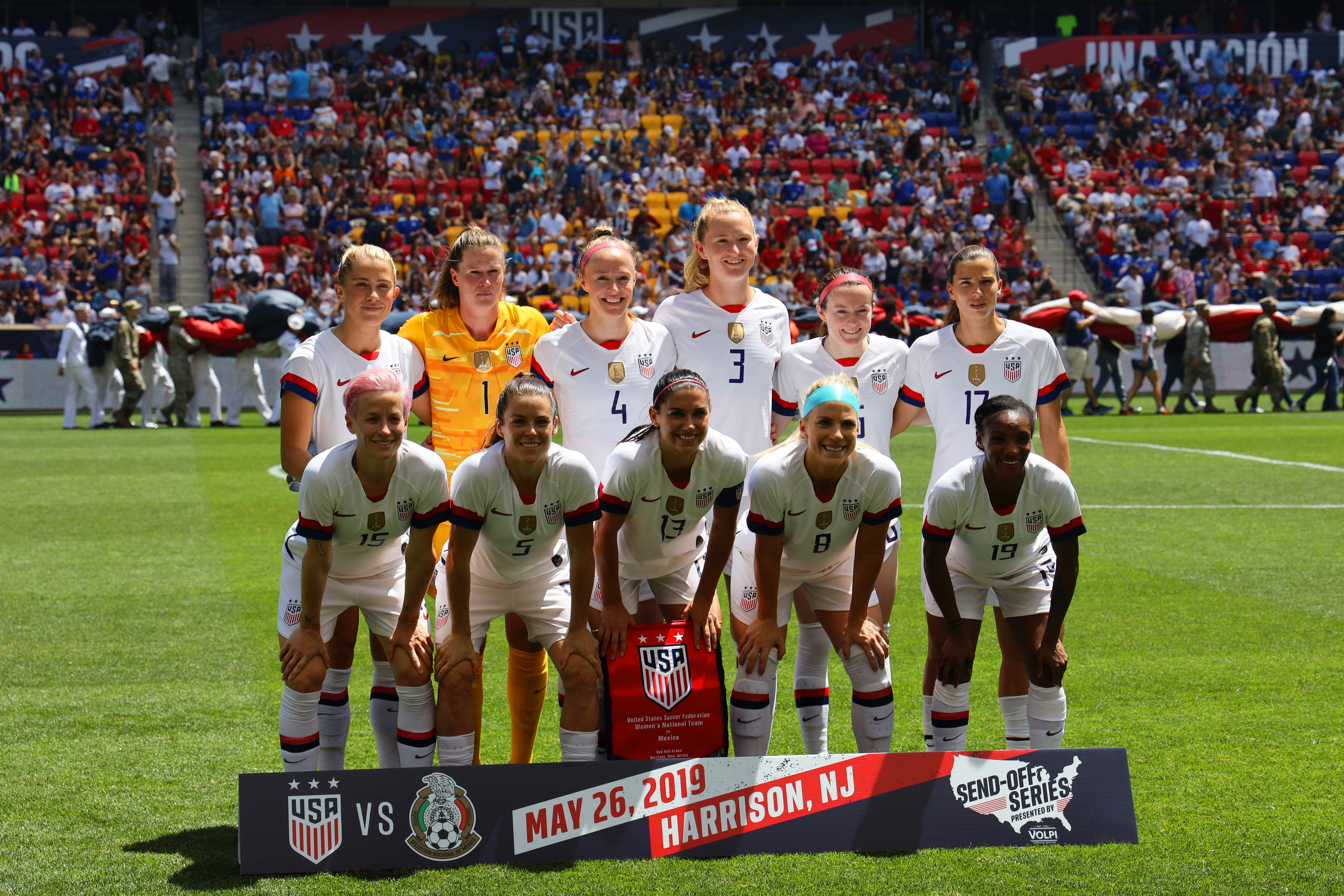 The US Women's National Team's starting line-up for a match, showing 11 players: 10 field players + 1 goalie
The US Women's National Team's starting line-up for a match, showing 11 players: 10 field players + 1 goalie
2.1 Goalkeepers
The goalkeeper has a different set of rules than field players, primary based on their permitted use of hands. The other players may not contact the ball with their hands, which will be explained in more detail in the next section (it’s not as simple as it sounds!). The goalkeeper can use their hands within their 18-yard box. Both goals have an 18-yard box marked around them, shown below:

The two 18-yard boxes are shown in blue. Each goalie can use their hands within this space on their side of the field.
There are a few restrictions on goalkeepers to keep the game fair and fluid. They may not hold the ball in their hands for more than 6 seconds, they may not use their hands to receive a pass from a teammate’s feet/legs (chest and head passes can be caught), and once a goalkeeper has released the ball from their hands they cannot pick it up again until it has touched another player.
- Fouls, Misconduct, and Penalizations
Fouls and misconduct refer to actions that violate the rules of the game and have penalties associated with them. We won’t worry about the difference between the two for now. What is important is to understand what actions are not allowed in football and how they are penalized.
3.1 Fouls and Misconduct
Intention is very important in football. If the referee feels clear intention from a player to do anything not allowed, even if for whatever reason it didn’t ultimately happen, it will still be a foul. For example, if a player blatantly tries to kick another player and misses, it will be treated the same by the referee as if the kick had hit. On the other hand if a player accidentally kicks another player somehow, it will be penalized much less than an intentional kick or possibly not penalized at all if it was unavoidable. The general rule behind football is that players must be playing the ball, not the opposing players. This means that the intention, focus, and purpose of their movements must be focused on the ball rather than on another player. For example, bodying another player to shield the ball is okay, bodying another player when not around the ball is not allowed. If a player jumps for a header and collides with another player it may be allowed, if a player jumps directly into another player clearly focusing on hitting the player and not winning the header, it’s a foul. These are the most important actions not allowed in football:
- Kicking an opponent
- Tripping an opponent
- Jumping at/into an opponent
- Shoulder to shoulder contact is allowed when playing the ball
- Charging an opponent
- Pushing an opponent.
- Holding off/blocking an opponent with an arm is allowed when playing the ball
- Holding/grabbing an opponent
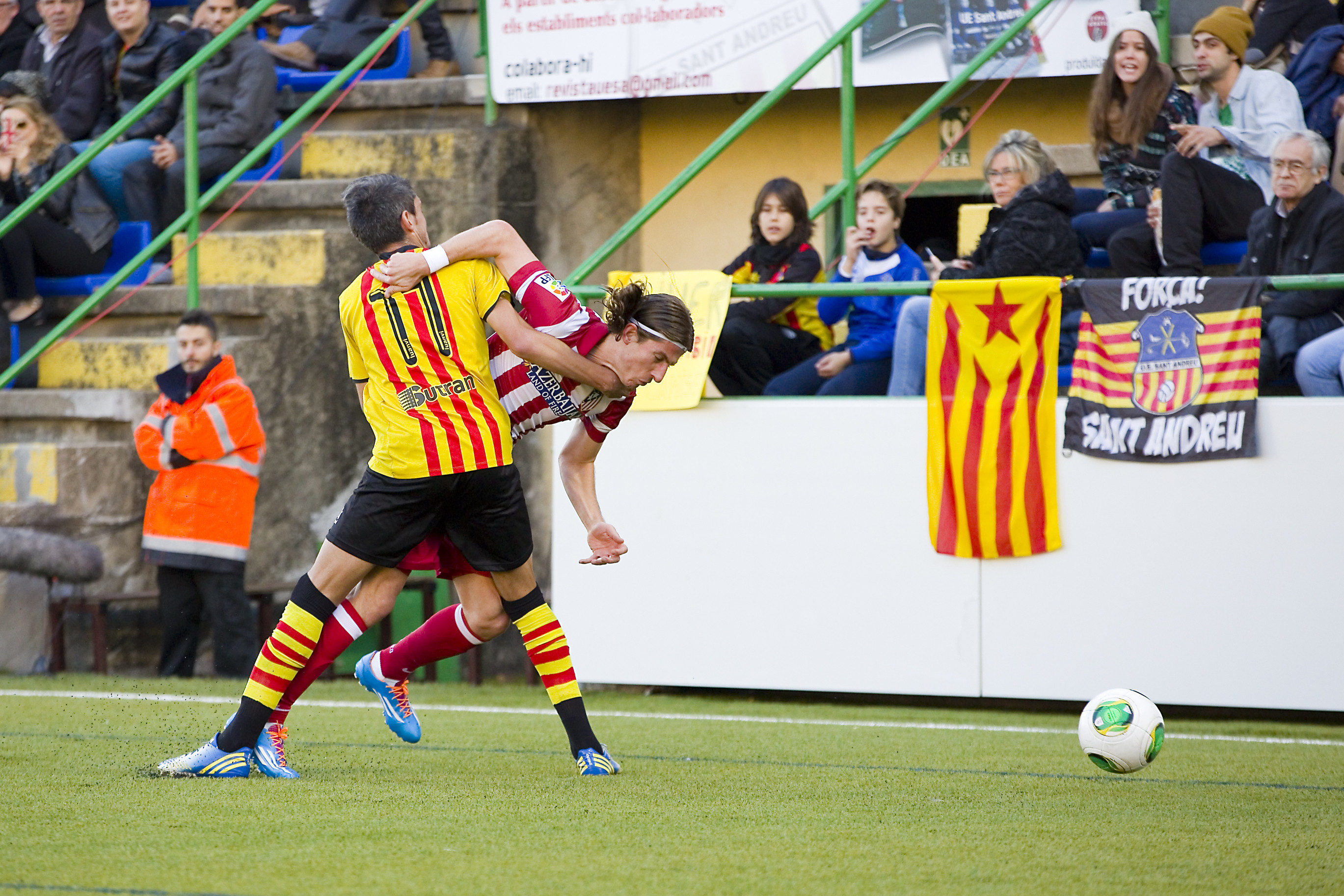
A clear foul (holding an opponent)
- Tackling refers to a player going for the ball with their foot when another player has possession of it. Generally speaking, tackling becomes a foul if the tackler’s foot connects with the opposing player before the ball, or if it is conducted in a reckess manner (feet high in the air, tacking with cleats up, etc.).
3.1.1 Handballs
A handball occurs when a player touches the ball with their hand or arm under any of the following circumstances:
- There was intent to strike the ball with the hand/arm
- The contact was avoidable by the player (including if the ball traveled from enough distance)
- The arm/hand was in an unnatural position (generally meaning it was extended and away from the body)
The degree of impact the incident has on the game is also considered. As can be seen, there is significant room for interpretation by the referees. These laws do change overtime as well. In 2020 they became more strict in the Premier League, incorporating the rule that if the contact has enough impact on the play, regardless of intent and avoidable-ness, it is to be be penalized. That was not the case prior. To understand the general rule, however, is fairly straightforward.
Generally speaking, a handball refers to contact of the hand/arm with the ball when it was avoidable and/or intentional, and the impact that the contact had upon the play of the game is also considered (the higher the impact the more likely it is to be penalized). The severity of the penalization depends on these factors as well (the more intentional, etc. the more severe the penalty). Now, let’s look at the different types of penalizations in football
3.2 Penalizations
When a foul occurs, the team fouled will be awarded a free kick. Furthermore, the referee might decide to add further penalizations to the player guilty of the foul. These penalizations may come in the following forms:
Yellow Cards
A yellow card, also called a caution, is given to a player as a warning. It is given for a number of fouls (usually around 3) in one game, a more severe/reckless foul, or a foul that had a greater impact on the play. Also, depending on the tournament/competition a certain number of yellow cards generally leads to some kind of a future suspension, forcing a player to miss some number of matches.
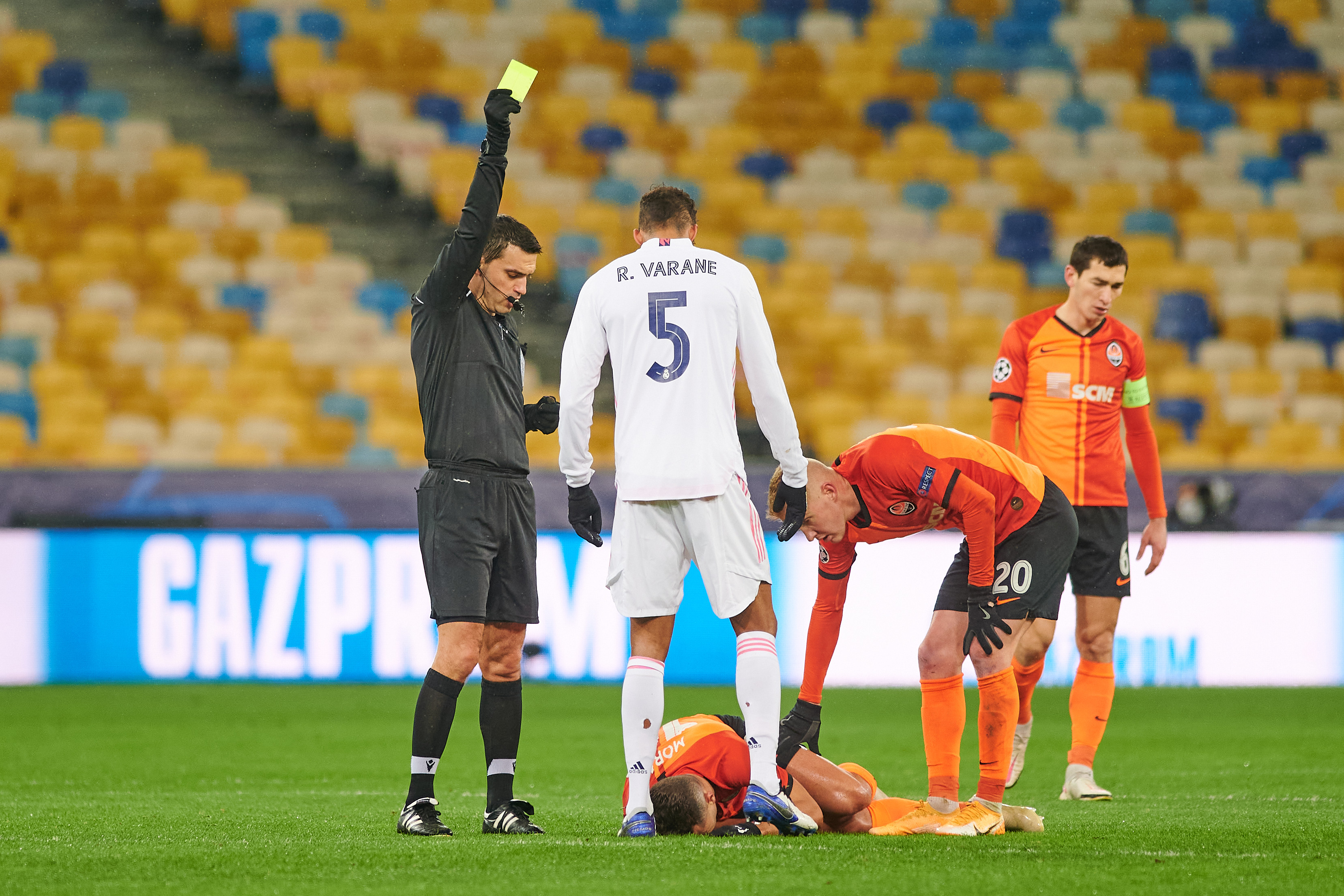
A referee giving a yellow card to Raphael Varane of Real Madrid for a foul
Red Cards
A red card is given if a player receives a 2nd yellow card in one game, or for a very severe foul. The player will have to leave the field and their team will continue with 10 players for the rest of the match, and that player will serve a suspension as well (the number of games depends on the competition).
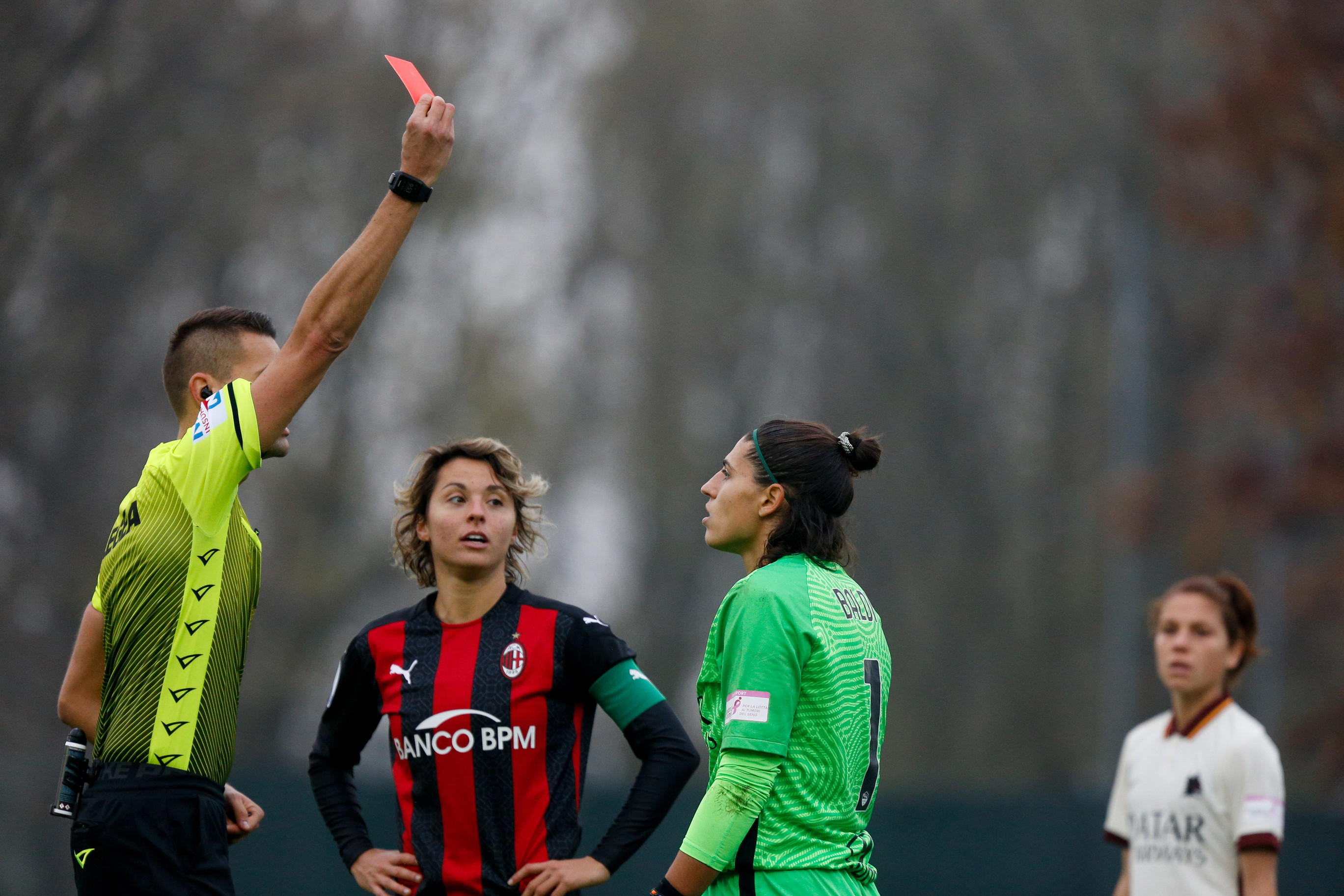
A referee giving a red card to Rachele Baldi of AS Roma (against AC Milan)
For exmaple in the English Premier League, a ban of 1-3 games will occur depending on the circumstances of the red card, and very severe actions may heed even greater suspensions. Most leagues and compeittions have similair policies. Luis Suarez was infamously banned from participating in any game across all competitions for 4 months after biting an opposing player in the 2014 World Cup.
3.3 Set Pieces
A set piece is a circumstance in football that involves a restart of play. The common examples are after fouls or when the ball has gone out of play. After fouls, a free kick or penalty kick will be awarded to the team that was fouled.
Free Kicks
There are two types of freekicks: direct and indirect. Direct freekicks are much more common, as they are awarded to a fouled team when the foul occurs anywhere on the field except in the other team’s 18-yard box. If a player is fouled inside the opposition’s box, they will be awarded a penalty kick (which we’ll explain next).
Direct freekicks
Direct freekicks occur for a foul. The play stops, the ball is placed at the point of the foul, the opposing team must stand 10 yards away from the ball, and with the ref’s whistle the team can play the ball however they’d like and then play resumes. Often, if the freekick is close enough to the opposing team’s goal, the free kick taker will shoot on the opposing goal. The kick taker cannot be the next person to touch the ball.
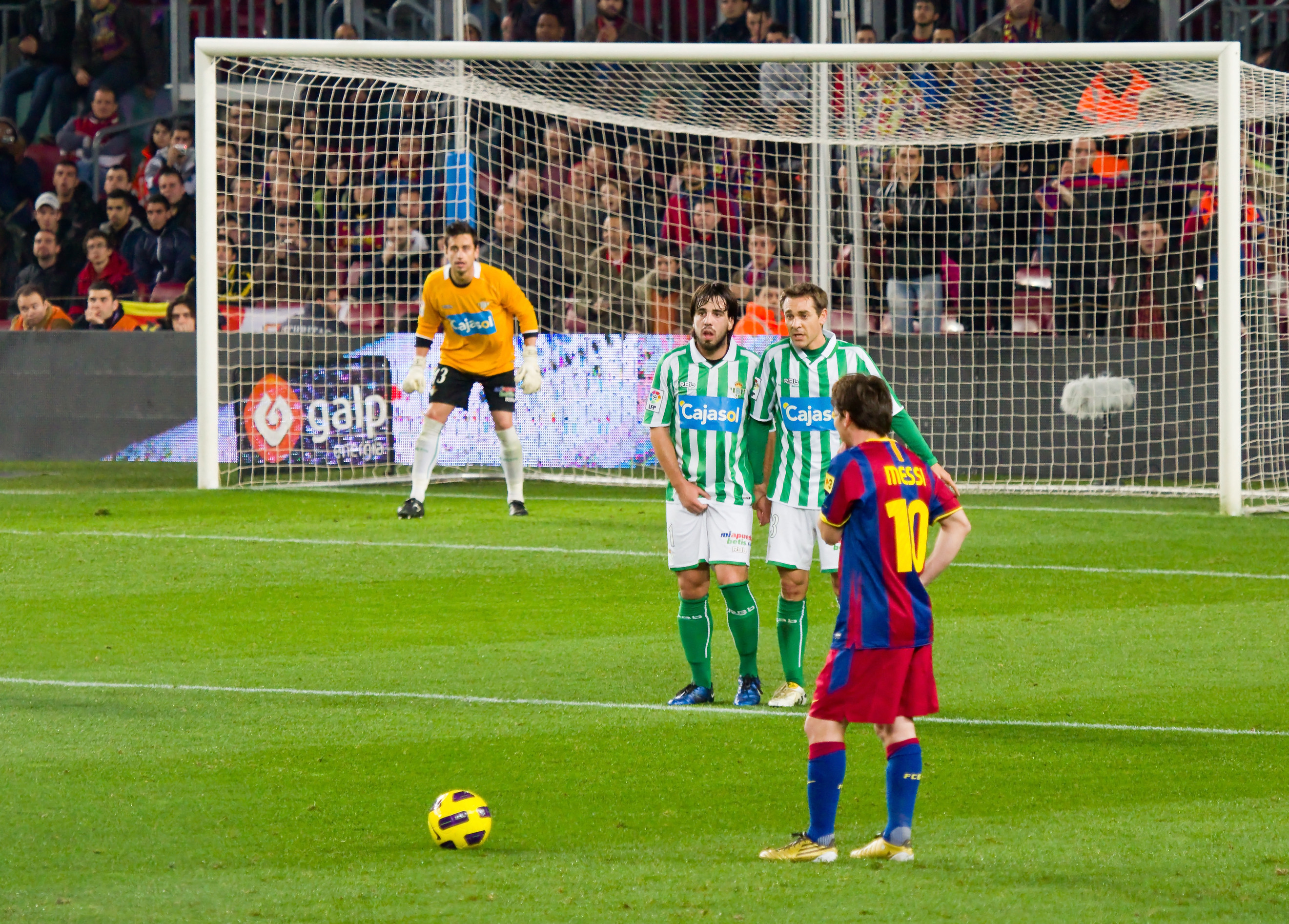
Lionel Messi of FC Barcelona preparing to take a free kick
Indirect freekicks
Indirect freekicks are not as common. They occur for certain rule violations that aren’t exactly fouls. An example is if a goalkeeper picks up a passback from their teammate, which is not allowed, the other team will be awarded an indirect freekick. Indirect freekicks can also be awarded within the 18 yard box if the violation occurs there, unlike direct free kicks (what would heed a direct free kick in the box results in a penalty kick).
An indirect freekick is the same as a direct, except that the kick taker cannot score with their touch (they cannot shoot ‘direct’). The ball must come off at least one other player after the kick for it to be eligible to score. Often for an indirect freekick close to the opposing goal, the shooter will tap the ball to a teammate for them to shoot. However, this can be difficult because as soon as the tap occurs the opposing players will rush the ball.
Penalty Kicks
A penalty kick is awarded to a team fouled within the 18-yard box of the opposing team. The ball is put on the penalty spot (12 yards out from the goal), all players except the shooter must stand outside of the 18-yard box, and the goalie must stay between their posts until the kick is struck (although often the keepers will inch forward a bit before and the refs don’t call it. If the movement is significant enough and the keeper saves the ball, the ref may allow the shooter to retake the penalty). Once the kick is struck, other players may enter the area and the play continues as normal. Just like freekicks, the shooter may not be the next person to touch the ball after striking it.
Throwins
A throwin is awarded to one team when the ball goes out of play along either long side of the field (the sides without goals) after touching any player on the opposing team last. The team with the throwin will send one player to take the ball, and they can use their hands to throw the ball in from the point where it left the field.
- The rules of a throwin are:
- The throw must be taken from where the ball left the field
- A goal cannot be scored directly from a throw in
- The thrower must throw the ball with both hands, from behind their head, and over their head
- The thrower must have both feet on the ground while throwing
- The thrower must face the play (they cannot throw it backwards)
- The throwin must enter the field, and cannot bounce outside of the field
- The thrower cannot be the next person to touch the ball
Goal Kicks
A goal kick is awarded to one team when the ball goes out of play along the side of that team’s goal, and it touched an opposing player last. That team is then awarded a kick within their goal area. Here are the two goal areas highlighed in blue:
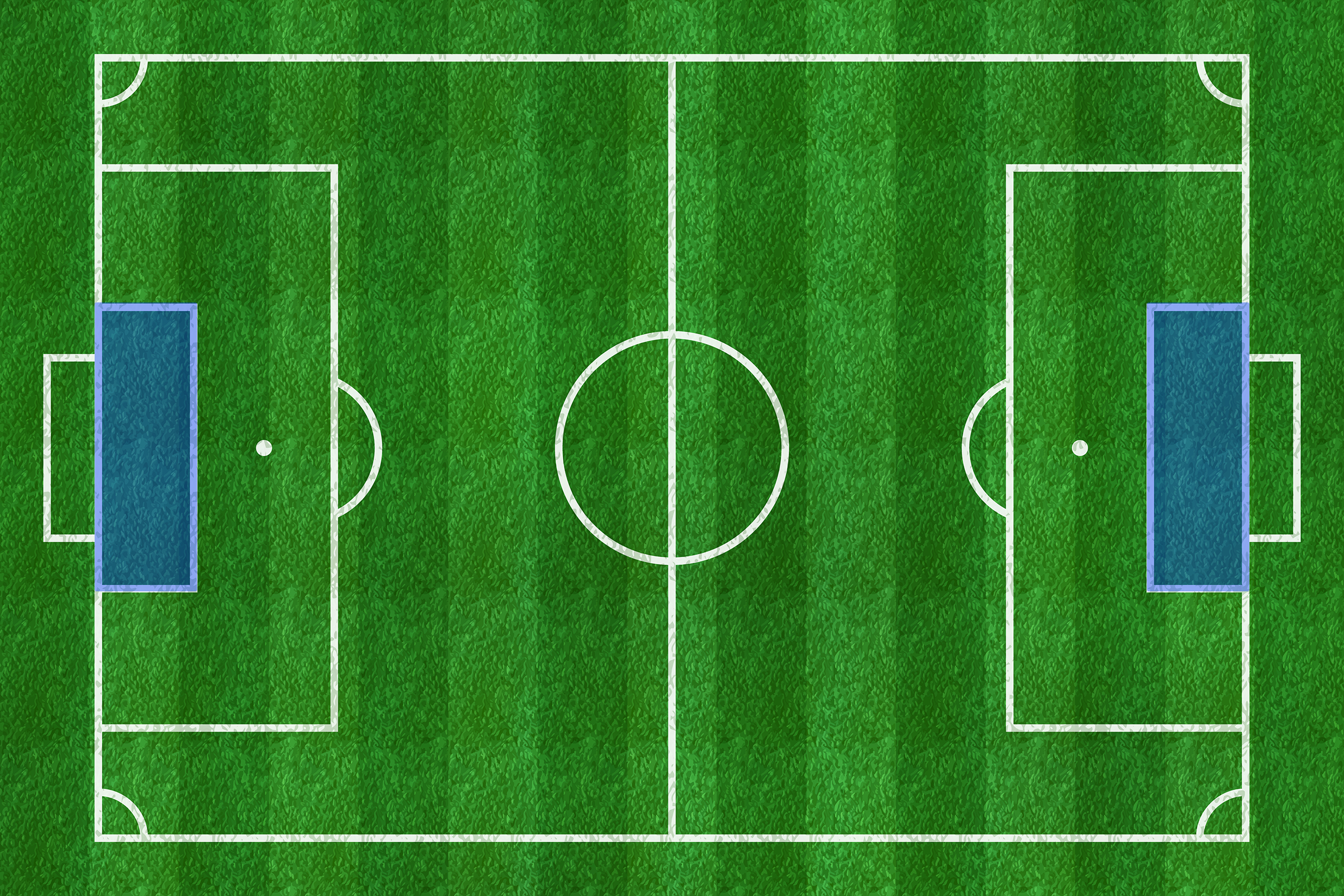 The two goal areas. Goal kicks must be taken from within this area.
The two goal areas. Goal kicks must be taken from within this area.
The goalie doesn’t have to be the one to take this kick, but almost always will.
Corner Kicks
A corner kick is awarded to one team when the ball goes out of play along the side of the other team’s goal, and it touched an opposing player last. The corner kick will be taken from the corner of the field that is closest to where the ball went out (so if the ball goes out to the right of the goal, the kick is taken from the right corner). The ball must be still and positioned on/in the quarter-circle at the corner. Opponents must remain 10 yards away from the ball until it is kicked, and as always the kicker cannot be the first person to touch the ball after the kick. Usually, the kicker will cross the ball into a number of teammates making runs towards the opposing goal who will try to score. It is not uncommon to score like this from a corner kick.
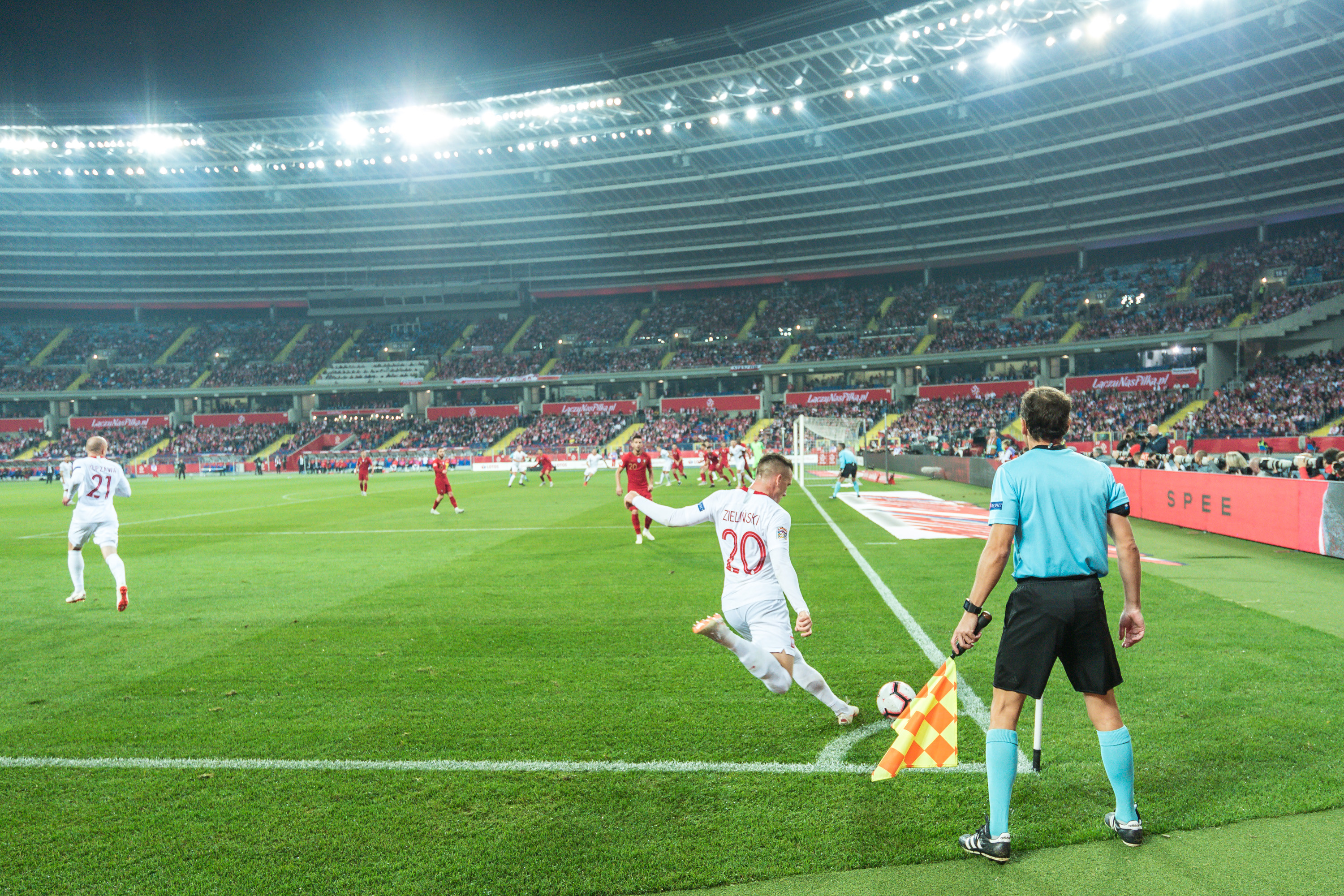
3.4 Offsides
Offsides is one of the rules with an application that often causes controversy. There are many very specific scenarios and debates around offsides in football, however they are not necessary to dive into in order to understand the concept and general rule. This video explains the basics of offsides:
As the video explains, offsides is generally about being behind the last opposing defender and ahead of the ball. For a receiver of a pass, they are judged as being offsides or not the moment the pass is played to them, rather than the moment they receive the ball. This results in forwards needing to be skilled at timing their runs forward, and defenders having to be very aware of the opposing forwards relative to the offsides, particularly at the moment a pass is being played. It's also worth noting that offsides only applies in the opposing half. A player cannot be offsides when in their own half of the field.
- Substitutions
At the pro level, each team has 3 subs per game (which can be done 1 at a time or in groups). This may vary at youth level and other types of competitions. Due to a cramped season after COVID delays, there was a temporary change by FIFA that allowed leagues the option to grant teams up to 5 substitutions per game (although still a maximum of three opportunities to substitute).
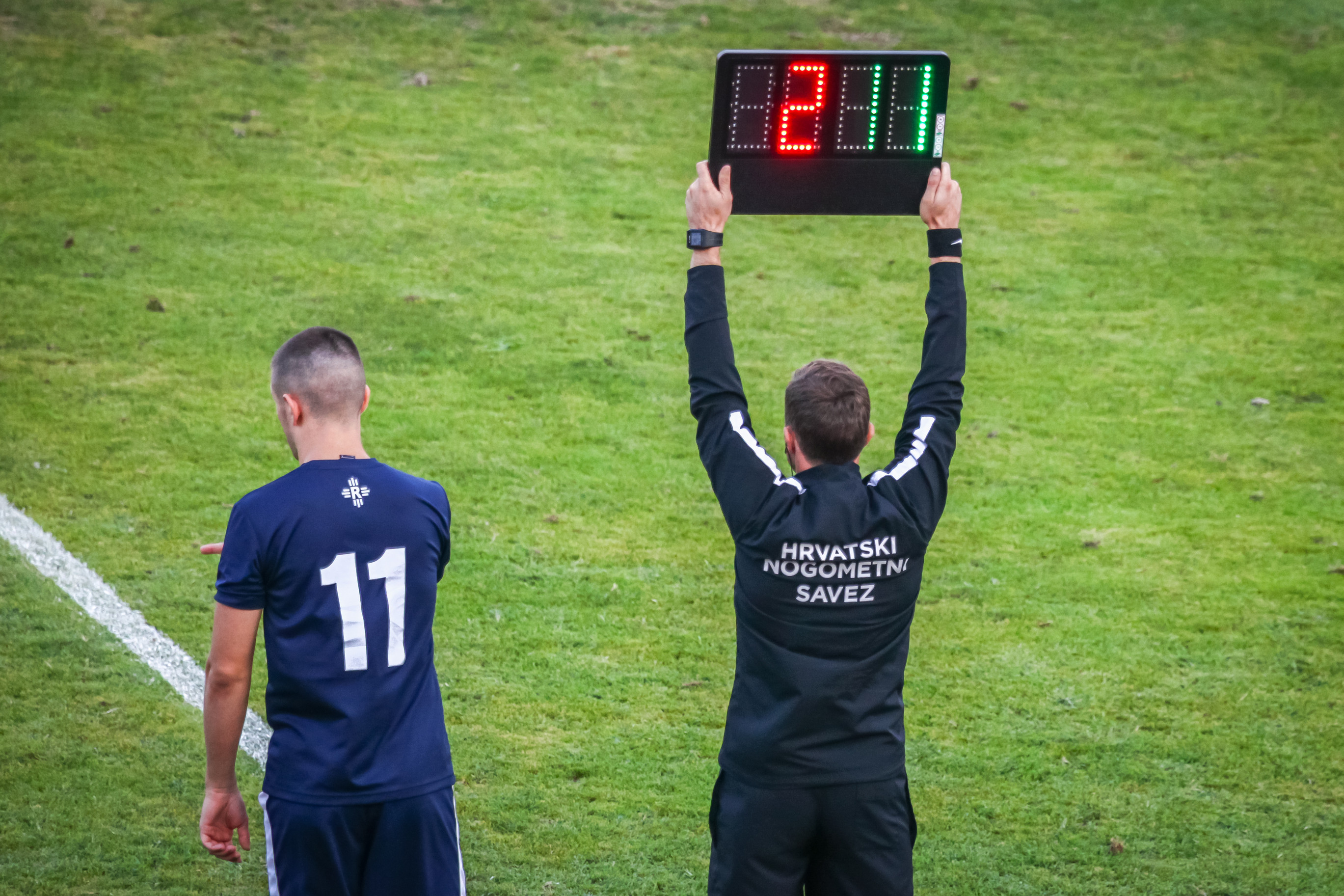 A player being substitied on. The 4th official holds a board showing #2 being subbed off for #11
A player being substitied on. The 4th official holds a board showing #2 being subbed off for #11
- Scoring and Outcomes
In order for a goal to occur, the whole ball must cross the line between the posts of the goal. If any part of the ball does not cross the line, it is not a goal. Once a goal is scored, play stops while one team generally celebrates (and the other likely laments), and play will be restarted by the team that was scored on starting with the ball in the middle of the field once both teams have all players in their own half of the field.
- Game Outcomes
There are a few different ways a game can end. The most straightforward is with one team winning and the other losing, meaning the winner had more goals at the end of the match. In a competitive league, the winner will be awarded 3 points and the loser 0. If the match ends and the teams have the same number of goals, they will either tie the game or go to extra-time. This is determined by the type of competition. In a league, they will tie and both get 1 point. If they are in an elimination stage of a tournament, however, they cannot tie. The game will then enter extratime.
6.1 Extratime
Extratime is divided into two 15 minute halves of normal play. Teams again switch sides on the half, but this time there is no halftime break. Once extratime is over, the team with more goals will be the winner. If the game is still tied it will go to penalty kicks (also called a penalty shootout).
6.2 Penalty Kicks
When a game goes to penalties, the teams will take turns taking penalty kicks to determine the winner. Both teams will put their players in an order in which they’ll take the kicks. Every player on the field (including the goalkeeper) must appear in the order, and this order will restart once it is completed and everyone has taken a kick.
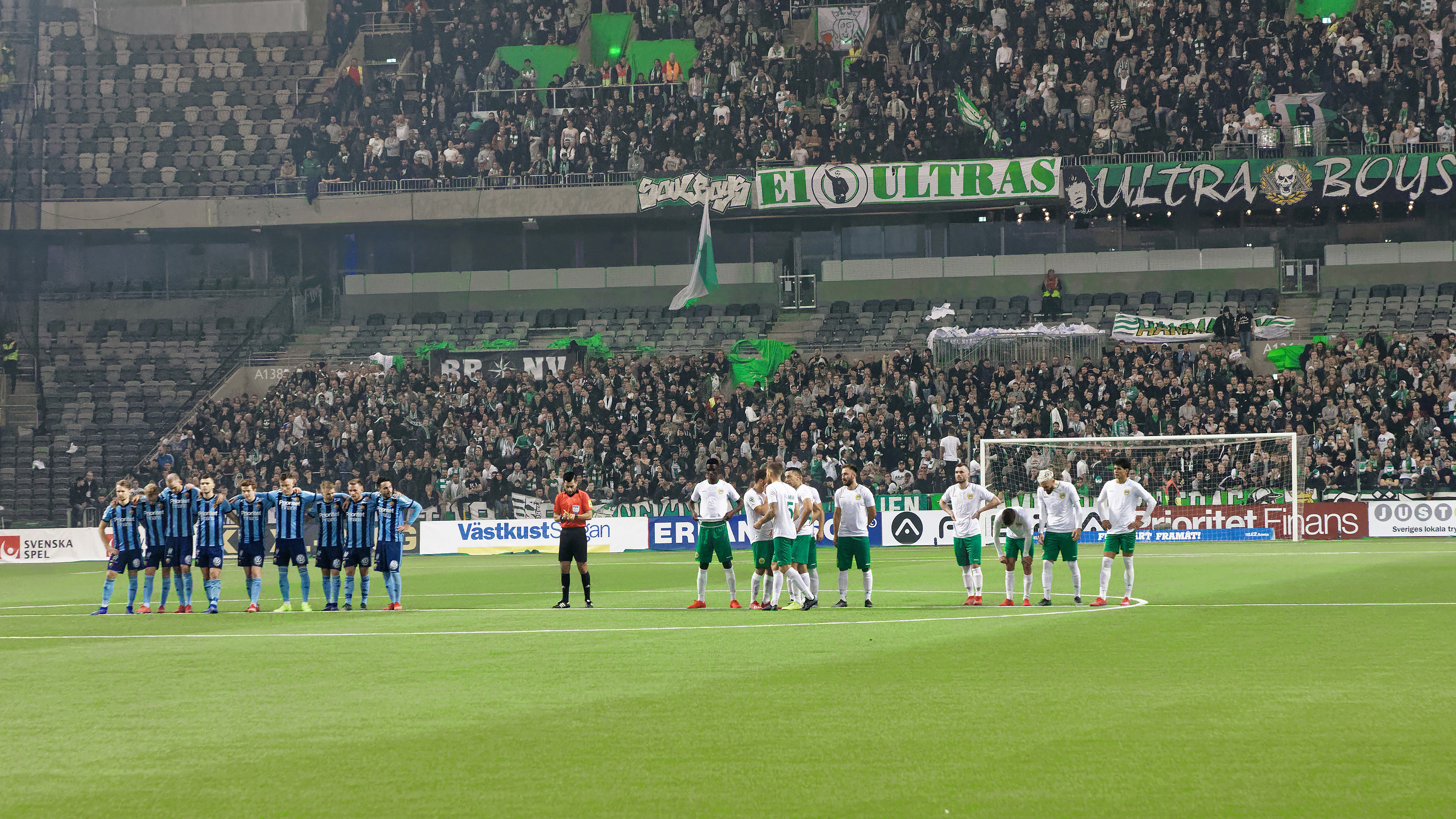 Djurgarden and Hammarby before a penalty shootout
Djurgarden and Hammarby before a penalty shootout
The teams will begin alternating kicks. First, the winner is decided by a ‘best of 5’ approach. This means both teams are working towards five kicks each, and if at any point up to and including the 5th kick it becomes impossible for one team to have less or the same goals than the other with these first 5 kicks each, that team wins. So if one team misses their first three, and the other scores their first three, the shootout ends there because the first team could not possibly catch up with their remaining two kicks. Or, if one team scored 5/5, the other 4/4 and now misses their last kick, the first team wins.
If both teams are tied by the time they have each taken 5 kicks, they enter sudden death. This means that they continue alternating kicks, and the first instance of one team missing their kick and the other scoring will end the match with the second team winning. As long as they continue both scoring or both missing on the same turns, they continue. The curent record for the longest professional penalty shootout occurred in 2005 in the Namibian Cup between KK Palace and The Civics, which entailed 48 total penalty kicks!
- VAR
The last piece to understanding football rules is learning about Video Assistant Referee, more commonly known as VAR. This is currently a controversial topic in the world of football. VAR refers to a match official who reviews video footage and communicates with the head referee on the field through a headset. It also involves the referee going over to the sidelines and checking the video himself when necessary.
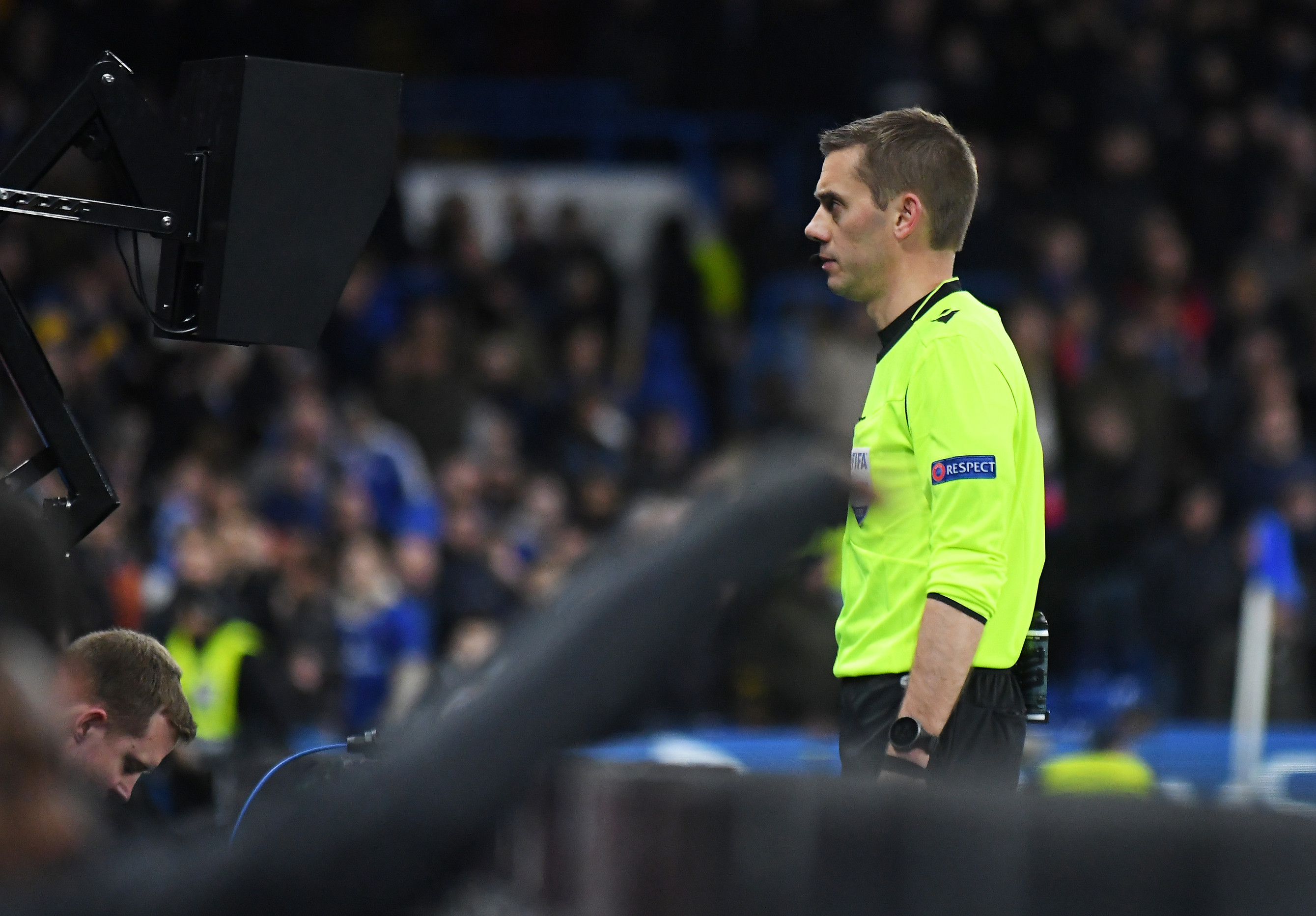 A referee consulting the VAR screen
A referee consulting the VAR screen
The controversy is that many feel it disrupts the flow of the game to have the referee pausing play to check a decision. Not only does the game stop completely, but players and fans must wait to see what happens which often subtracts from the emotions related with the incident. Goals are not nearly as fun to celebrate one minute after they happen! Nevertheless, VAR allows referees the tools to make sure they don't make the wrong decision which could ultimately lead to an unfair match outcome. VAR is still farily new to the game, and most would agree that while the technology shows promise, the ideal method of use has not been standardized yet.
Conclusion
Those are the rules of football! They can certainly be understood in more depth than was explored here, but this covers the practical knowledge needed to understand what is occuring in a match and why. Hopefully this has given you the basis for understanding the game and enabled you to enjoy both watching and participating in our beloved sport.
Be sure to follow SportsEdTV Football on Facebook and Instagram so you don’t miss our future articles


